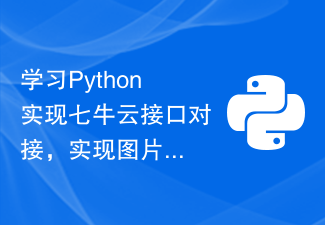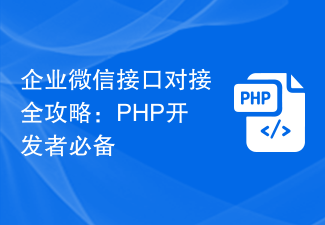Huawei Cloud ECS Management Guide: Java Code Samples to Quickly Connect the Interface
Abstract: This article will introduce how to use Java code samples to quickly connect to the interface of Huawei Cloud Elastic Cloud Server (ECS). By studying this article, you will learn how to use Java code to manage ECS instances and implement operations such as creating, querying, starting, and stopping instances. The code examples will help you better understand how to use the SDK provided by Huawei Cloud to operate the ECS interface.
Introduction:
Huawei Cloud Elastic Cloud Server (ECS) provides a series of interfaces to facilitate users to manage ECS instances through code. This article will use Java code examples to introduce how to connect to the interface of Huawei Cloud ECS and implement common operations.
- Environment preparation
Before you start, make sure you have configured the Java development environment and registered and opened a Huawei Cloud account. In addition, you need to install and configure Huawei Cloud Java SDK. - Create ECS instance
Using the ECS interface in Huawei Cloud Java SDK, you can create an ECS instance through the following code example:
import com.huaweicloud.sdk.core.AuthCredentials;
import com.huaweicloud.sdk.core.auth.BasicCredentials;
import com.huaweicloud.sdk.core.exception.ClientRequestException;
import com.huaweicloud.sdk.core.exception.ServiceResponseException;
import com.huaweicloud.sdk.ecs.v2.EcsClient;
import com.huaweicloud.sdk.ecs.v2.model.*;
public class CreateEcsExample {
public static void main(String[] args) {
AuthCredentials credentials = new BasicCredentials()
.withAk("<your access key>")
.withSk("<your secret key>")
.withProjectId("<your project ID>");
EcsClient client = EcsClient.newBuilder()
.withCredential(credentials)
.withRegion("<your region ID>")
.build();
CreateServersRequest request = new CreateServersRequest()
.withBody(new CreateServersRequestBody()
.withName("test-ecs")
.withImageRef("<image ID>")
.withFlavorRef("<flavor ID>")
.withAvailabilityZone("<availability zone>")
.withAdminPass("<admin password>")
);
try {
CreateServersResponse response = client.createServers(request);
System.out.println("Create ECS instance succeeded, ECS ID: " + response.getServerIds());
} catch (ServiceResponseException e) {
System.err.println(e.getMessage());
} catch (ClientRequestException e) {
System.err.println(e.getMessage());
}
}
}In this example, you need Replace <your access key></your>, <your secret key></your>, <your project id></your>, <your region id></your>, <image id></image>, <flavor id></flavor>, <availability zone></availability> and <admin password> for your own information. After running the code, an ECS instance named <code>test-ecs will be created and the instance ID will be returned.
- Querying ECS instance information
Using the ECS interface in Huawei Cloud Java SDK, you can query the information of the ECS instance through the following code example:
import com.huaweicloud.sdk.core.AuthCredentials;
import com.huaweicloud.sdk.core.auth.BasicCredentials;
import com.huaweicloud.sdk.core.exception.ClientRequestException;
import com.huaweicloud.sdk.core.exception.ServiceResponseException;
import com.huaweicloud.sdk.ecs.v2.EcsClient;
import com.huaweicloud.sdk.ecs.v2.model.*;
public class QueryEcsExample {
public static void main(String[] args) {
AuthCredentials credentials = new BasicCredentials()
.withAk("<your access key>")
.withSk("<your secret key>")
.withProjectId("<your project ID>");
EcsClient client = EcsClient.newBuilder()
.withCredential(credentials)
.withRegion("<your region ID>")
.build();
ListServersDetailsRequest request = new ListServersDetailsRequest();
try {
ListServersDetailsResponse response = client.listServersDetails(request);
System.out.println("Query ECS instance details succeeded, ECS list: " + response.getServers());
} catch (ServiceResponseException e) {
System.err.println(e.getMessage());
} catch (ClientRequestException e) {
System.err.println(e.getMessage());
}
}
}Similarly, Change <your access key></your>, <your secret key></your>, <your project id></your> and <your region in the code replace id></your> with your own information. After running the code, the details of the ECS instance will be returned.
- Other operations
In addition to creating and querying ECS instances, you can also use Huawei Cloud Java SDK to perform other operations on ECS instances, such as starting, stopping, and deleting them. Detailed sample code can be found in the Huawei Cloud official SDK documentation.
Conclusion:
This article introduces how to use Java code examples to connect to the interface of Huawei Cloud ECS and implement operations such as creating and querying ECS instances. By studying this article, you can quickly get started using the Java SDK provided by Huawei Cloud to achieve flexible management of ECS instances. I hope this article will be helpful to you when using Huawei Cloud ECS!
Reference materials:
- Huawei Cloud Developer Center: https://www.huaweicloud.com/developer/index.html
- Huawei Cloud SDK Documents: https://developer.huaweicloud.com/sdk?list=1
The above is the detailed content of Huawei Cloud ECS Management Guide: Java Code Sample Quick Interface. For more information, please follow other related articles on the PHP Chinese website!
 如何使用Vue实现前后端分离和接口对接?Jun 27, 2023 am 10:09 AM
如何使用Vue实现前后端分离和接口对接?Jun 27, 2023 am 10:09 AM随着前端技术的不断发展,前后端分离的架构模式愈发流行。前后端分离的优点是显而易见的,前端和后端可以独立进行开发,各自有自己的技术选型和开发节奏,更能够提高系统的可维护性和可扩展性。而Vue作为当下流行的前端框架,更是能够带来更为优秀的用户体验。本文将详细介绍如何使用Vue实现前后端分离的架构模式,并演示接口对接的方法。一、后端实现对于后端的实现,我们可以选择
 Go语言开发小技巧:阿里云接口对接实践分享Jul 05, 2023 pm 11:49 PM
Go语言开发小技巧:阿里云接口对接实践分享Jul 05, 2023 pm 11:49 PMGo语言开发小技巧:阿里云接口对接实践分享前言:现如今,云计算已经成为了企业信息化建设的核心技术之一,而阿里云作为国内知名的云计算服务提供商,拥有丰富的云产品和服务。本文将分享笔者在使用Go语言对接阿里云接口时的一些实践经验,并以代码示例的形式进行阐述。一、引入阿里云GoSDK在使用Go语言对接阿里云接口之前,首先我们需要引入相应的阿里云GoSDK,以便
 Python与又拍云接口对接教程:实现音频降噪功能Jul 05, 2023 pm 12:16 PM
Python与又拍云接口对接教程:实现音频降噪功能Jul 05, 2023 pm 12:16 PMPython与又拍云接口对接教程:实现音频降噪功能引言:随着人们对音频质量的要求越来越高,音频降噪技术被广泛应用于语音识别、音频处理等领域。本教程将介绍如何使用Python编程语言和又拍云接口对接,实现音频降噪功能。通过该教程的学习,你将能够了解音频降噪背后的技术原理,并且掌握如何使用Python编程实现该功能。一、背景知识音频降噪是一种通过分析音频信号,去
 使用Python与腾讯云接口对接,实现实时语音转写功能Jul 06, 2023 am 08:49 AM
使用Python与腾讯云接口对接,实现实时语音转写功能Jul 06, 2023 am 08:49 AM使用Python与腾讯云接口对接,实现实时语音转写功能近年来,随着人工智能技术的飞速发展,语音识别技术也日益受到关注。腾讯云作为国内领先的云服务提供商,提供了丰富的语音识别接口,其中包括实时语音转写接口。本文将介绍如何使用Python与腾讯云接口对接,实现实时语音转写功能。首先,我们需要在腾讯云官网上申请API密钥,获取到腾讯云API的访问密钥。获取到访问密
 从零开始:用Go语言对接阿里云接口的实战指南Jul 05, 2023 pm 05:45 PM
从零开始:用Go语言对接阿里云接口的实战指南Jul 05, 2023 pm 05:45 PM从零开始:用Go语言对接阿里云接口的实战指南引言:作为一个云计算服务提供商,阿里云的接口为开发者提供了强大的功能和便利性。本文将介绍如何使用Go语言对接阿里云的接口,并提供了实战示例,帮助读者快速入门和上手。一、准备工作在开始对接阿里云接口之前,我们需要完成一些准备工作。注册阿里云账号:访问阿里云官网(https://www.aliyun.com),注册一个
 学习Python实现七牛云接口对接,实现图片滤镜合成Jul 05, 2023 pm 01:45 PM
学习Python实现七牛云接口对接,实现图片滤镜合成Jul 05, 2023 pm 01:45 PM学习Python实现七牛云接口对接,实现图片滤镜合成摘要:随着云计算和大数据技术的快速发展,云存储和云服务成为了现代应用开发中不可或缺的一部分。七牛云作为一家领先的云服务提供商,为开发者提供了丰富的云存储及相关服务。本文将介绍如何使用Python语言对接七牛云接口,并实现图片滤镜合成的功能。同时,将通过代码示例,帮助读者更好地理解实现过程。1.安装依赖库在开
 企业微信接口对接全攻略:PHP开发者必备Jul 06, 2023 pm 05:53 PM
企业微信接口对接全攻略:PHP开发者必备Jul 06, 2023 pm 05:53 PM企业微信接口对接全攻略:PHP开发者必备在当前企业信息化的浪潮下,越来越多的企业开始使用企业微信作为内部沟通和协作工具。而作为开发者,了解并掌握企业微信的接口对接技术,可以为企业提供更加定制化的功能,提升企业的工作效率。本文将为PHP开发者提供一份企业微信接口对接的全攻略,包含接口调用方法和示例代码。一、企业微信介绍企业微信是腾讯推出的面向企业用户的即时通讯
 企业微信接口对接与PHP的合同管理技巧分享Jul 05, 2023 pm 02:58 PM
企业微信接口对接与PHP的合同管理技巧分享Jul 05, 2023 pm 02:58 PM企业微信接口对接与PHP的合同管理技巧分享企业微信作为一种强大的企业协作工具,可以方便地实现企业内部的信息共享和沟通。而对于一些需要进行合同管理的企业来说,通过企业微信接口的对接,可以进一步优化合同管理流程,提高工作效率。本文将分享一些与PHP相结合的企业微信接口对接和合同管理的技巧和实例代码。获取企业微信的AccessToken在与企业微信接口对接之前,


Hot AI Tools

Undresser.AI Undress
AI-powered app for creating realistic nude photos

AI Clothes Remover
Online AI tool for removing clothes from photos.

Undress AI Tool
Undress images for free

Clothoff.io
AI clothes remover

AI Hentai Generator
Generate AI Hentai for free.

Hot Article

Hot Tools

mPDF
mPDF is a PHP library that can generate PDF files from UTF-8 encoded HTML. The original author, Ian Back, wrote mPDF to output PDF files "on the fly" from his website and handle different languages. It is slower than original scripts like HTML2FPDF and produces larger files when using Unicode fonts, but supports CSS styles etc. and has a lot of enhancements. Supports almost all languages, including RTL (Arabic and Hebrew) and CJK (Chinese, Japanese and Korean). Supports nested block-level elements (such as P, DIV),

MantisBT
Mantis is an easy-to-deploy web-based defect tracking tool designed to aid in product defect tracking. It requires PHP, MySQL and a web server. Check out our demo and hosting services.

SAP NetWeaver Server Adapter for Eclipse
Integrate Eclipse with SAP NetWeaver application server.

Atom editor mac version download
The most popular open source editor

MinGW - Minimalist GNU for Windows
This project is in the process of being migrated to osdn.net/projects/mingw, you can continue to follow us there. MinGW: A native Windows port of the GNU Compiler Collection (GCC), freely distributable import libraries and header files for building native Windows applications; includes extensions to the MSVC runtime to support C99 functionality. All MinGW software can run on 64-bit Windows platforms.






